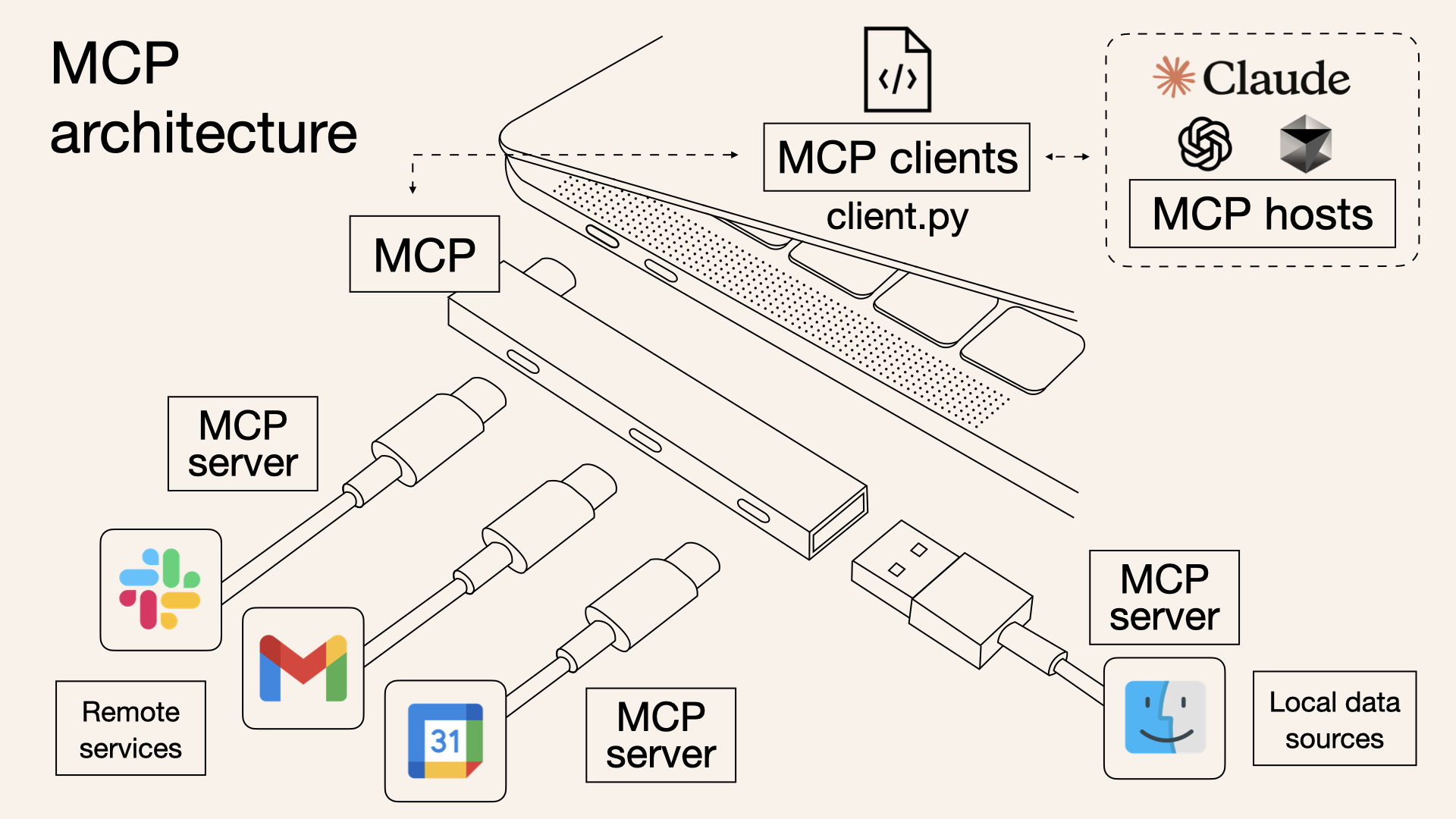MCP Unleashed: Revolutionizing AI Integrations Beyond APIs
Dive into the future of AI connectivity with MCP's standardized approach.
Introducing the Model Context Protocol (MCP)
Imagine a world where connecting AI systems to tools and data sources is as seamless as plugging in a USB-C device. The Model Context Protocol (MCP) is here to redefine AI integrations by offering a standardized protocol that simplifies how AI models access and utilize external resources. Created by Anthropic, MCP aims to establish itself as a new standard in AI tool interactions by removing the complexities associated with traditional APIs.
The Drawbacks of Traditional APIs
Traditional APIs can be cumbersome, requiring distinct integrations for each service or data source. Each connection involves separate code, documentation, and error handling strategies. In a metaphorical sense, working with APIs is like carrying separate keys for every door you need to unlock.
"Innovation distinguishes between a leader and a follower." - Steve Jobs
Why Choose MCP Over APIs?
MCP offers a unified platform, enabling a single integration to potentially access multiple tools and services. Its advantages include:
- Dynamic discovery of services
- Real-time two-way communication
- Consistent security controls
- Scalability and flexibility
How MCP Works: Architecture and Functionality
The architecture of MCP can be visualized as a bridge, coordinating data flow and instructions between AI models and tools without handling heavy logic itself. The architecture comprises three primary components: hosts, clients, and servers. Together they streamline interactions and provide secure access to both local and remote data sources.
 Image Source
Image Source
Real-World Applications of MCP
Consider scenarios where MCP shines:
- Trip Planning Assistant: Traditional methods would require separate integrations for each service. With MCP, a single protocol allows your AI assistant to check calendars, book flights, and send confirmations effortlessly.
- Advanced IDE: MCA enables an Integrated Development Environment to connect to file systems, version controls, and package managers seamlessly, offering enriched context awareness.
- Complex Data Analytics: MCP autonomously discovers and interacts with multiple data sources, facilitating intricate analytics without the hassle of multiple API connections.
When Traditional APIs Still Hold Value
While MCP offers numerous benefits, some use cases still demand traditional APIs, particularly where precise and predictable interactions are necessary. Choose traditional APIs when:
- Fine-grained control is a priority
- Tight coupling enhances performance optimization
- Maximum predictability is desired
Getting Started with MCP
Ready to integrate MCP? Follow these high-level steps:
- Define the capabilities your MCP server will offer
- Implement an MCP layer adhering to protocol specifications
- Choose appropriate transport methods
- Develop or connect specific data sources and services
- Establish secure connections between MCP servers and clients
Dive Deeper into Innovation
As the world of AI evolves, Model Context Protocol stands as a revolutionary advancement in AI integrations. Explore the official MCP spec to embark on a journey toward seamless AI connectivity. Discover how this protocol can enhance your organization's AI capabilities and elevate innovation to new heights.
If you need guidance or have questions about implementing MCP, consider scheduling a brainstorming session with experts like Norah Sakal to explore customized solutions. The journey to streamlined AI integration is only beginning.
Explore more about AI integrations